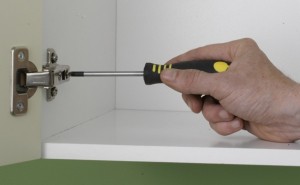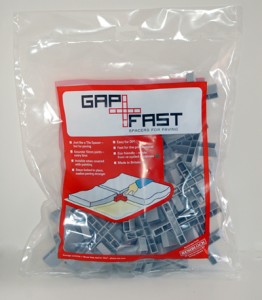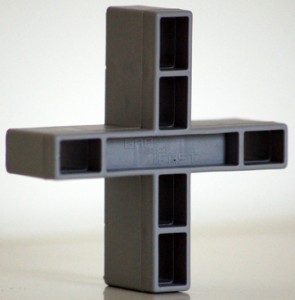Screwdriver sets
Posted in Buying Guides, Hand Tool Reviews on January 11th, 2012 by Julian Cassell – Be the first to commentScrewdriver sets are still essential parts of all DIY toolkits despite the fact that cordless drills now carry out most of the fixing requirements in our homes. In the following guide I’ll give you a few examples of why screwdrivers will always be needed, as well as some details about screwdriver designs and the types available. As is normally the case with any tool, you really don’t need every option to deal with the majority of DIY tasks and with this thought in mind, I’ll provide you with my choice for the best screwdriver set on the market.
When do you still need screwdrivers?
Basically, there are still times when a screwdriver makes more sense than a cordless drill, such as for the fiddly small screws or when you need really precise, accurate, and essentially non-slip control when driving in a screw. In the latter case, I’m thinking specifically of jobs such as fitting or changing a door handle; I’ve seen so many shiny new brass door handles that have deep scratches radiating out from the screwheads because someone has tried using a cordless drill driver to fix the screws in place and the screwdriver bit has slipped and gouged across the fitting plate. Always use hand held screwdrivers for this type of work.

Sometimes you’ve just got to use a hand held screwdriver, rather than a cordless drill, as it gives you much greater control when inserting a screw.
Another point is simply that trying to drive in traditional slothead screws with a cordless drill driver is certainly possible, but never really advisable, as they just slip too easily. Cordless drivers are really designed for use with crosshead screws (Posidriv and Phillips) or other designs that have more of a ‘socket’ fit for the screwhead such as Torx and Robertson screws (one for Canadian readers!).
Linked to the above points is simply the fact that the brute force of a cordless drill can sometimes work against you, and damage fixings, and fixing holes. For example, if you don’t have precise trigger control with your cordless drill when screwing hinges into a kitchen unit, you can end up damaging the screw or even the fixing hole. Standard screwdrivers just give you a bit more control in cases like this.
Screwdriver design
There are three parts to a screwdriver design and the eseential points for what you need to look out for are outlined below:-
- Handle design is pretty essential and so steer clear of anything very shiny or smooth as it simply doesn’t provide a good enough grip. Modern screwdriver designs tend to use softer handles made of materials that provide a better grip.
- Shaft design is not the biggest concern when choosing as most are either round or square in cross-section. The square ones allow you to grip them with an adjustable spanner or pliers in order to create greater torque, but to be honest that’s more ‘Engineering workshop’ than ‘DIY’. Shafts that are round in cross-section are more common, and that is all you need.
- Tip design and most importantly what the tip is made of are the most essential things to look at when buying a screwdriver set. If a screwdriver has a flared tip i.e. the tip is wider than the shaft, then you will get greater torque, but there is a limitation here as flared tip screwdrivers are not much help if the screwhead needs to end up below the surface of what you are screwing into. For example, fine for brass handles where the screwhead is above surface level, but useless for say, taking apart the kids’ toys in a case where the screwhead is recessed well below surface level. For this reason, I always think you need parallel (non-flared) tip options in your screwdriver set, as they are much more multipurpose. Also, and vitally, the tip material needs to be resistant to corrosion and made from hardened steel. In general, avoid anything that is shiny, and a sparkly silver colour from handle to tip – these should only really be used as toys inside Christmas crackers!
Screwdriver set sizes
Of course, screwdrivers can be bought separately, but it makes much more sense to buy them in sets as you’ll get much better value for money. You can buy screwdriver sets in a large range of sizes, but without doubt the six to ten piece ranges are all you really need for dealing with 95% of household requirements. This gives you small, medium, and large sized screwdrivers with heads/tips in at least two designs – normally you’ll get three slothead screwdrivers, and a further selection of crosshead designs, again in different sizes.
Best screwdriver set choice
My favourite option on the market, is the Stanley Fatmax 9 piece screwdriver set as firstly it provides what I think is the most useful selection of sizes and tips. Furthermore, the handle design used with the Fatmax set is incredibly comfortable and provides great grip, and the chrome vanadium construction of the actual screwdriver bar makes them exceptionally strong from handle to tip. They even have colour coded bits on their handles according to tip type, which makes it easy to pick out the right screwdriver when rooting around in your toolbox.
As discussed above, you really don’t need every size of screwdriver in your set, and so I’ve provided deals for what I feel is the optimum set size of around 9-10 screwdrivers. You can go for 6 or 7 piece sets, but for the small difference in cost, I’d always be tempted to go for the slightly larger set.
You’ll find the largest range of Fatmax screwdriver sets on Amazon. Other retailers where you can find them include Screwfix and Tooled-Up.

 Gapfast spacers are a new product on the market, and are quite simply a tile spacer for paving slabs. When I was first approached to offer an opinion on their suitability for the DIY market, I did ask myself the same 2 questions that always come to mind when any new product appears – “How did we manage up until now?” and therefore “Is there any need for it?”.
Gapfast spacers are a new product on the market, and are quite simply a tile spacer for paving slabs. When I was first approached to offer an opinion on their suitability for the DIY market, I did ask myself the same 2 questions that always come to mind when any new product appears – “How did we manage up until now?” and therefore “Is there any need for it?”. Now, I do not think this problem is a deal breaker with Gapfast as I think in practice you would use them marginally differently to a tile spacer. Firstly, you’d make sure they were pressed slightly into the bedding layer below the slabs, so that you would effectively ensure that even with relatively thin slabs, there would be a good depth of pointing above the spacer. Also the Gapfast spacer design is hollow, so that your pointing material would be taken into the structure of the spacer itself. But even if you couldn’t bring yourself to point over them, you could just as easily use the spacer in a pegging fashion (like most pro tilers), where you insert one leg of the spacer into a joint, normally two spacers per tile side, and then remove them all once the layout is set. This also means the spacers are reusable.
Now, I do not think this problem is a deal breaker with Gapfast as I think in practice you would use them marginally differently to a tile spacer. Firstly, you’d make sure they were pressed slightly into the bedding layer below the slabs, so that you would effectively ensure that even with relatively thin slabs, there would be a good depth of pointing above the spacer. Also the Gapfast spacer design is hollow, so that your pointing material would be taken into the structure of the spacer itself. But even if you couldn’t bring yourself to point over them, you could just as easily use the spacer in a pegging fashion (like most pro tilers), where you insert one leg of the spacer into a joint, normally two spacers per tile side, and then remove them all once the layout is set. This also means the spacers are reusable.